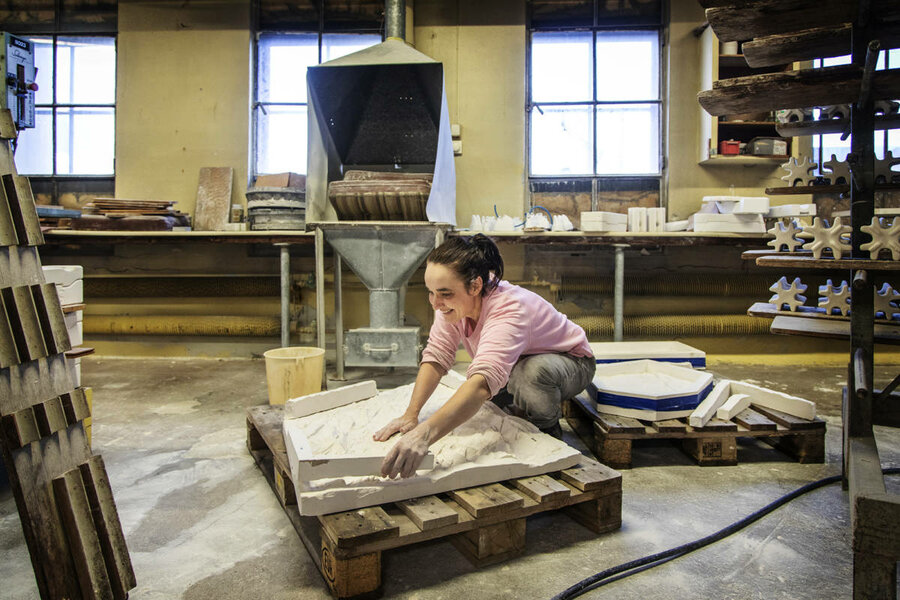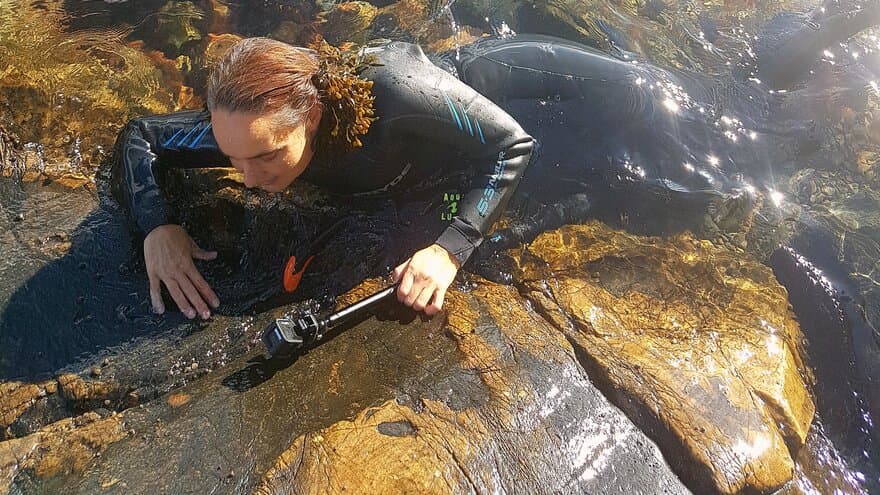Using art, landscape architecture and ecology, Norway’s first waterscape architect creates a broad awareness of the underwater impacts of development along our coastlines and offers innovative solutions.
In the first of its kind at NMBU, Elin T. Sørensen incorporates art, landscape architecture and marine biology to shine the spotlight on a little-seen landscape that is adversely affected by human activity: the urban intertidal zone. Using these various perspectives, Sørensen provides a broad scope to create awareness of the underwater impacts of development along our coastlines.
Watch digital stories of Sørensen's work at fjordskole.no
Coastlines are increasingly cluttered by human infrastructures. Intertidal interventions alter the physical, chemical, and biological environment of marine ecosystems and, in the case of current building practices, deprive people of the opportunity for close, tactile contact with the sea.
A local example in Norway is Frognerkilen, a bay in the inner Oslofjord, almost 60 hectares of which is covered by floating marinas. The boats prevent the sunlight from reaching the seabed and stop the water from circulating, the combined effects of which are detrimental to the flora and fauna beneath.
“Divers call the inner Oslofjord a seabed desert. Nothing can attach itself to the concrete walls. In the natural terrain, however, animals find places to live in the manifold cracks and crevices. Changing the course is all about creating inclusive, marine neighbourhoods”, says Sørensen.
Replicating nature
A key challenge in this work is how to replicate some of the complexity of nature when designing marine-life friendly underwater landscapes. Sørensen used digital fabrication tools such as 3D modelling and photogrammetry to explore possible solutions.
Together with a gypsum maker, she took imprints of the surfaces of Cambro-Silurian coastal rocks, a common feature along the inner Oslofjord. These rocks consist of layers of clay slate and limestone with variations in their surface. “Such surfaces provide ecological niches and great variation in the landscape,” explains Sørensen, who has a background as both a visual artist and a landscape architect.
3D models were printed in porcelain and clay. The digital production was funded by ARD Innovation, which NMBU and NIBIO own together, after they saw a commercial potential in this work. The results include a 3D animation that demonstrates how architectural design could look in urban coastal areas, using the natural coastal rocks and marine biology as a basis for the design.
“I have set out to unify the landscape between land and sea, both in people’s imagination and by concrete designs for building into the sea in more inclusive ways”, says Sørensen.
__________________________________
Elin T. Sørensen defended her doctoral thesis, Multispecies Neighbourhoods in Urban Sea Areas on 28 April 2021 by means of digital stories and via Zoom.

Fakta
| In the first of its kind at NMBU, the research-by-design thesis was disseminated by means of Digital Storytelling. This medium is a modern extension of the ancient art of storytelling, interwoven with spoken-word, sounds, moving images and digitized stills. In this way, research and concepts can be shared with a wider audience and be downloaded for easy listening, anywhere. |
All three episodes of the digital stories of Sørensen's work are available at:
https://www.fjordskole.no/podcast/
See Sørensen's HAV exhibit at the Norwegian BioArt Arena (NOBA)
_________________
More on Sørensen's work:
Dette gjør Norges første arkitekt på landskap under vann
Slik er Oslo under vann. Fra Frognerkilen til Alnas utløp. Se videoen
